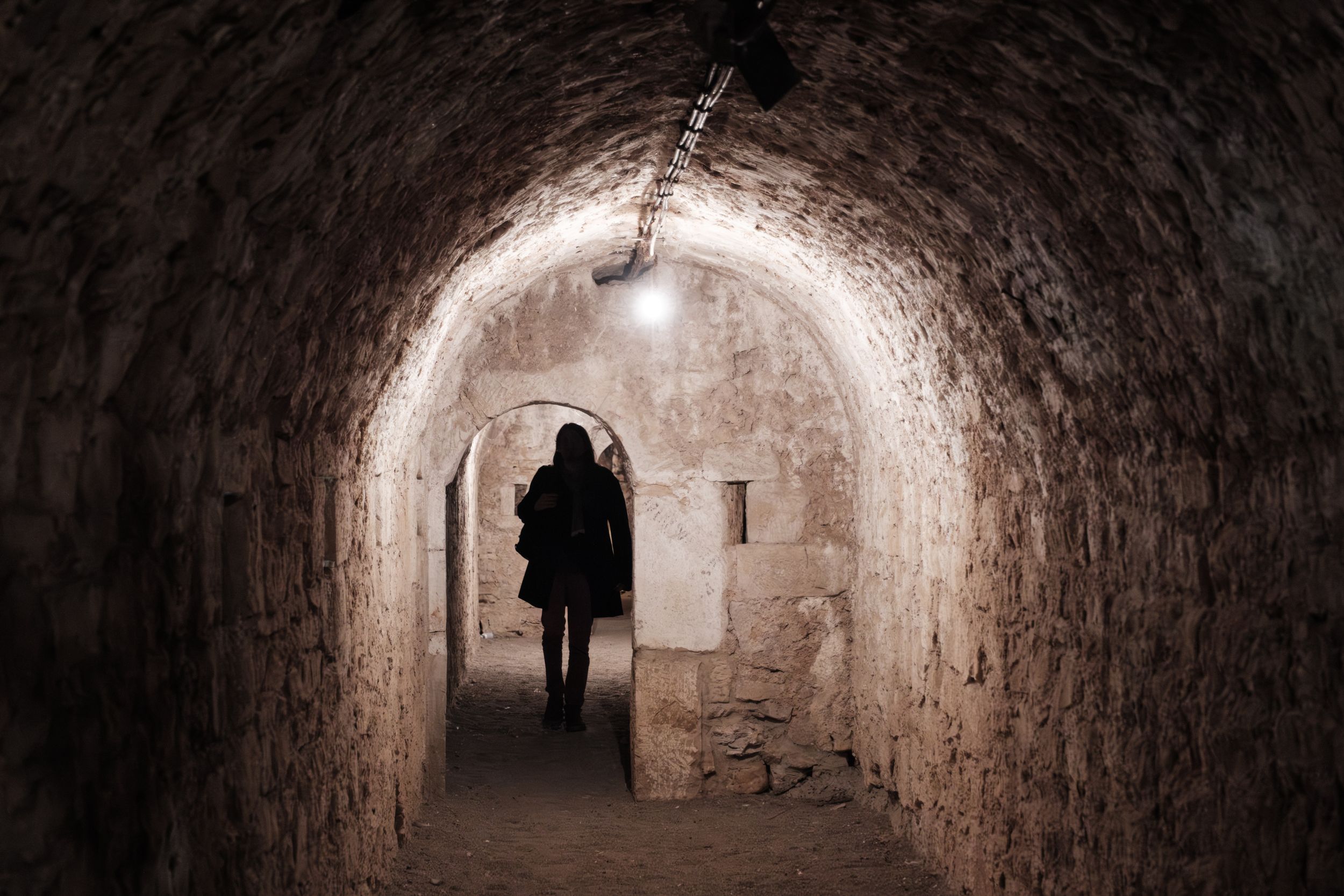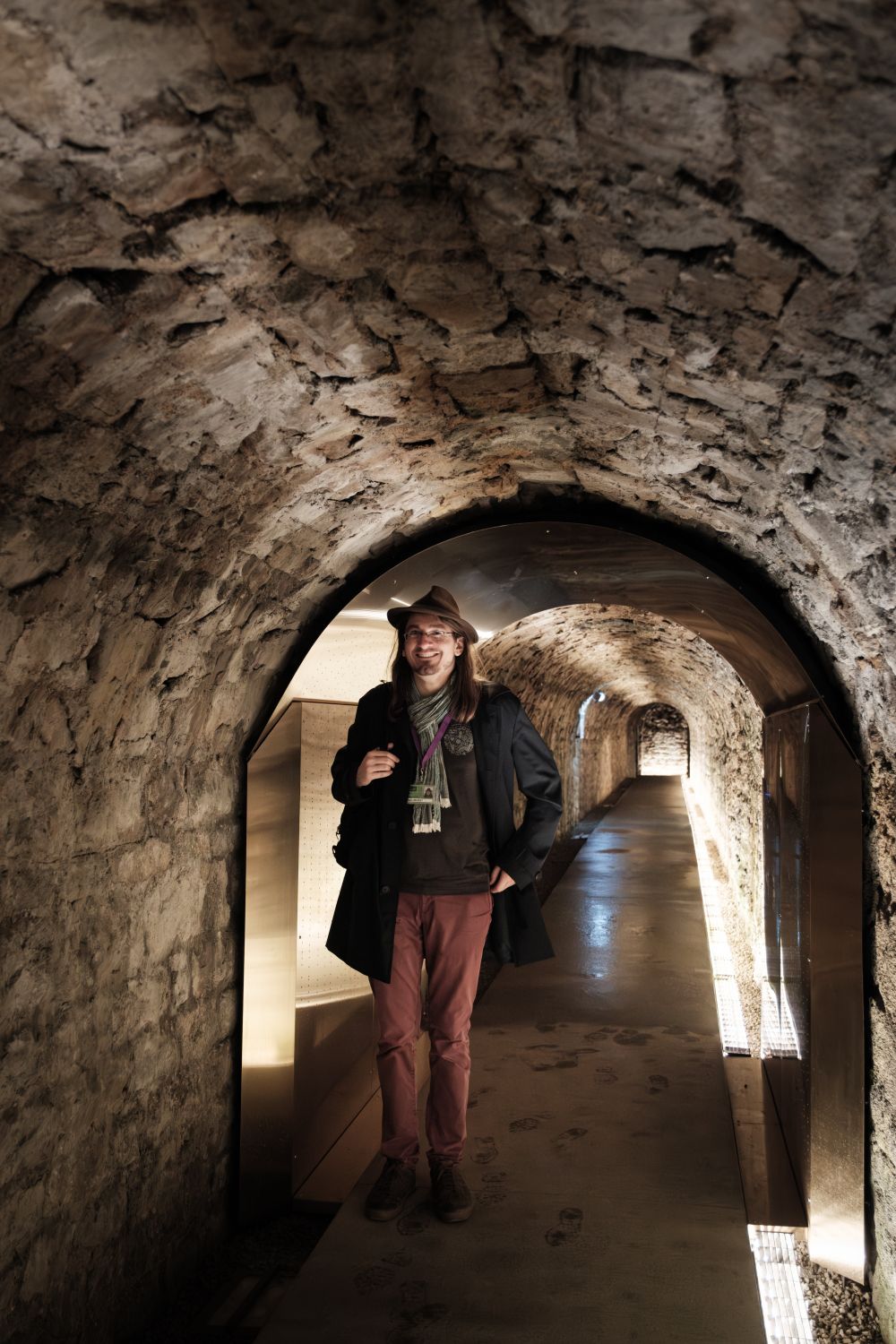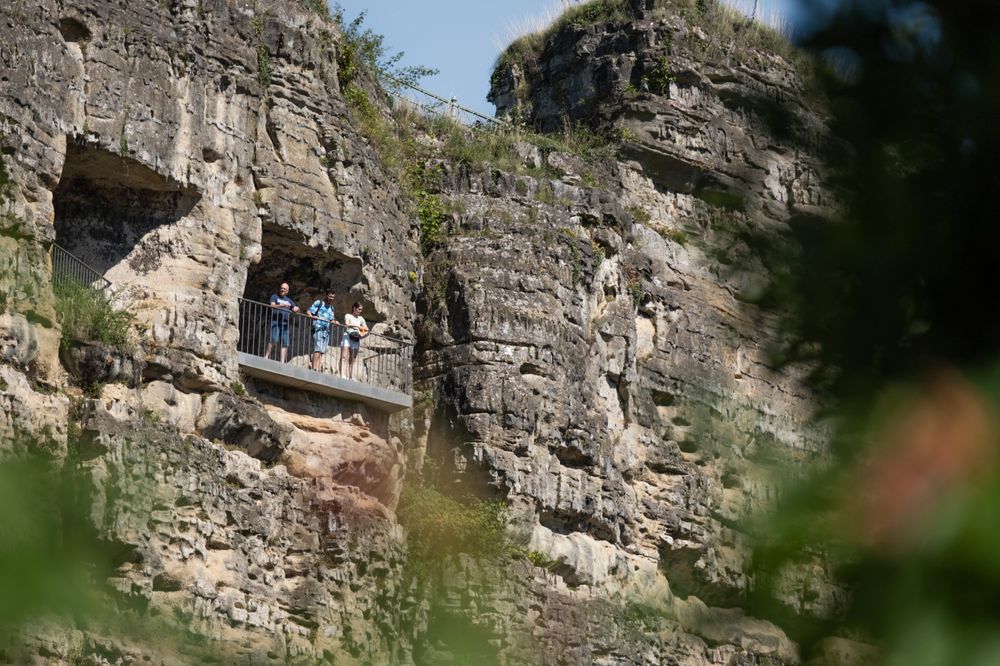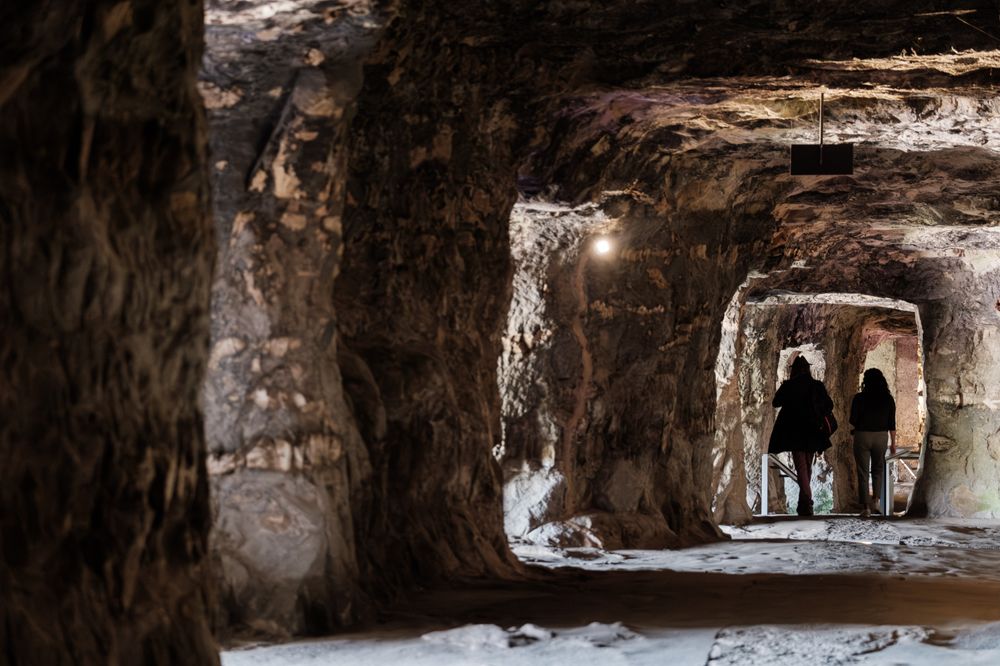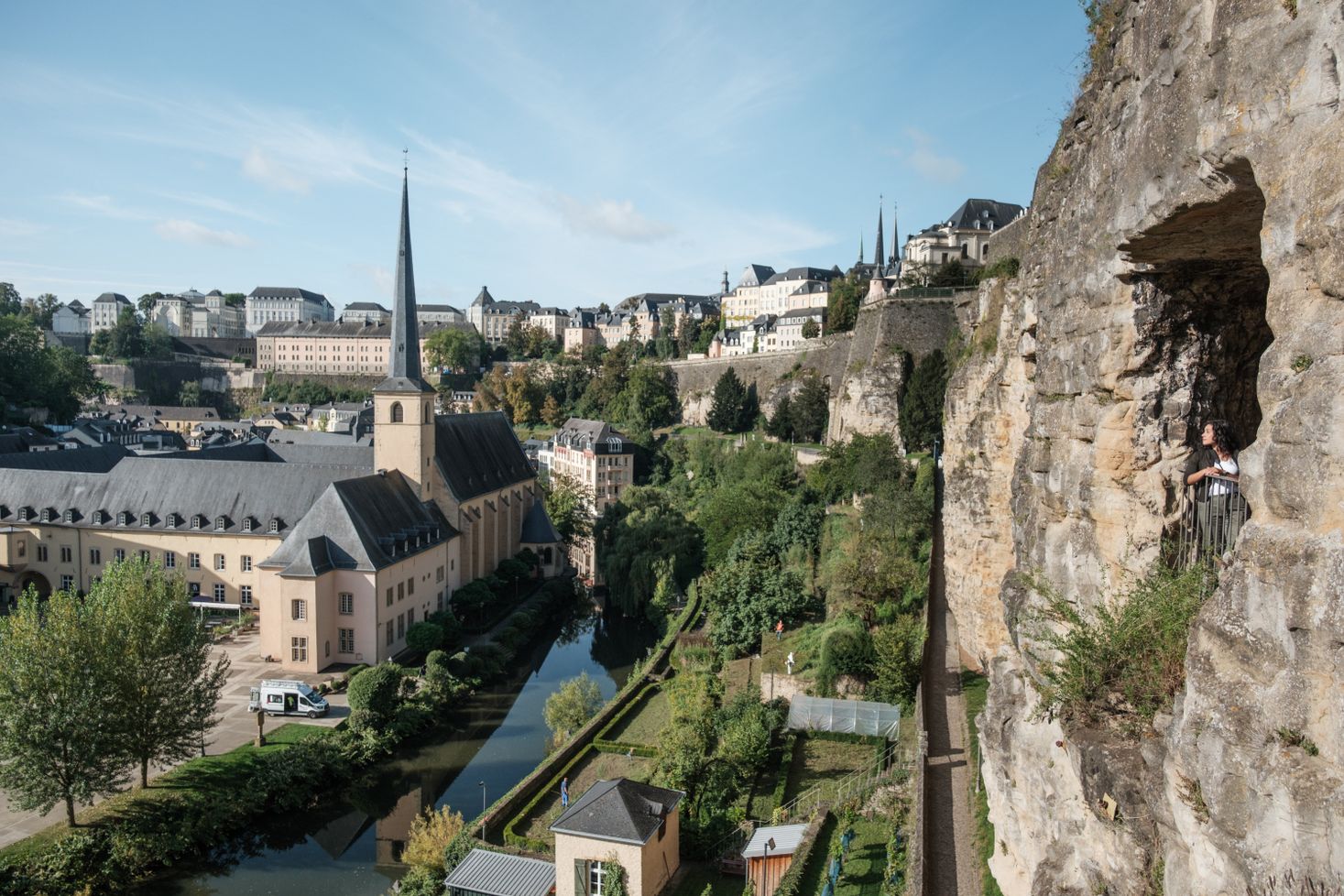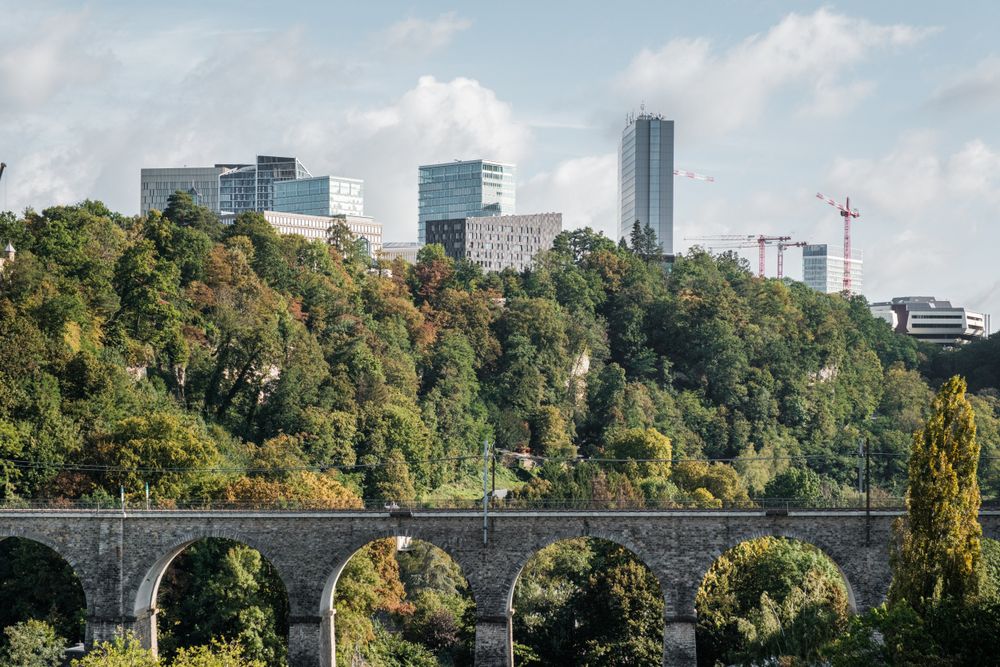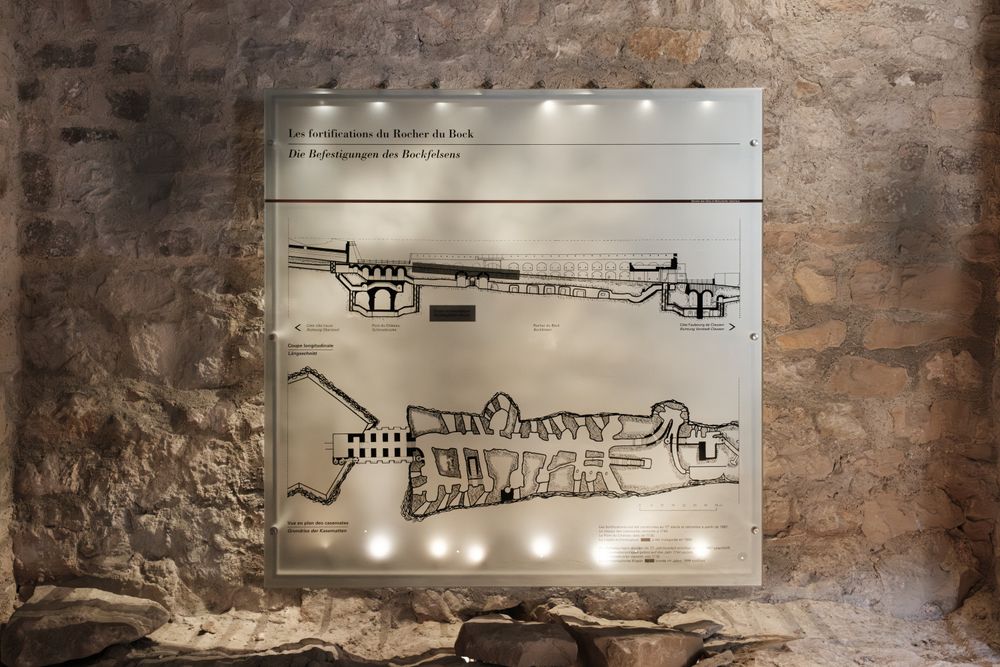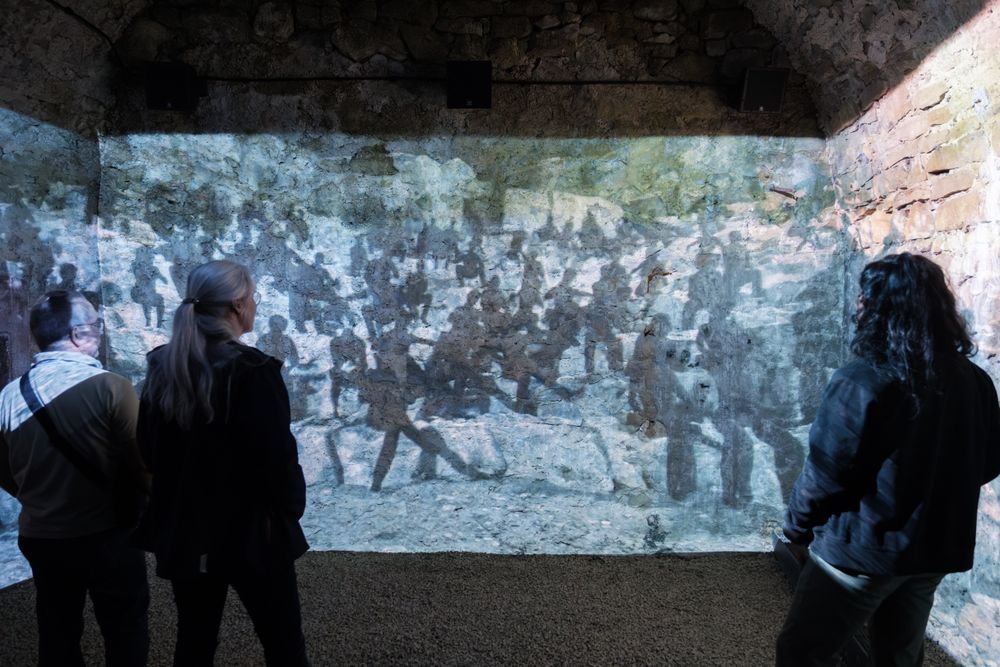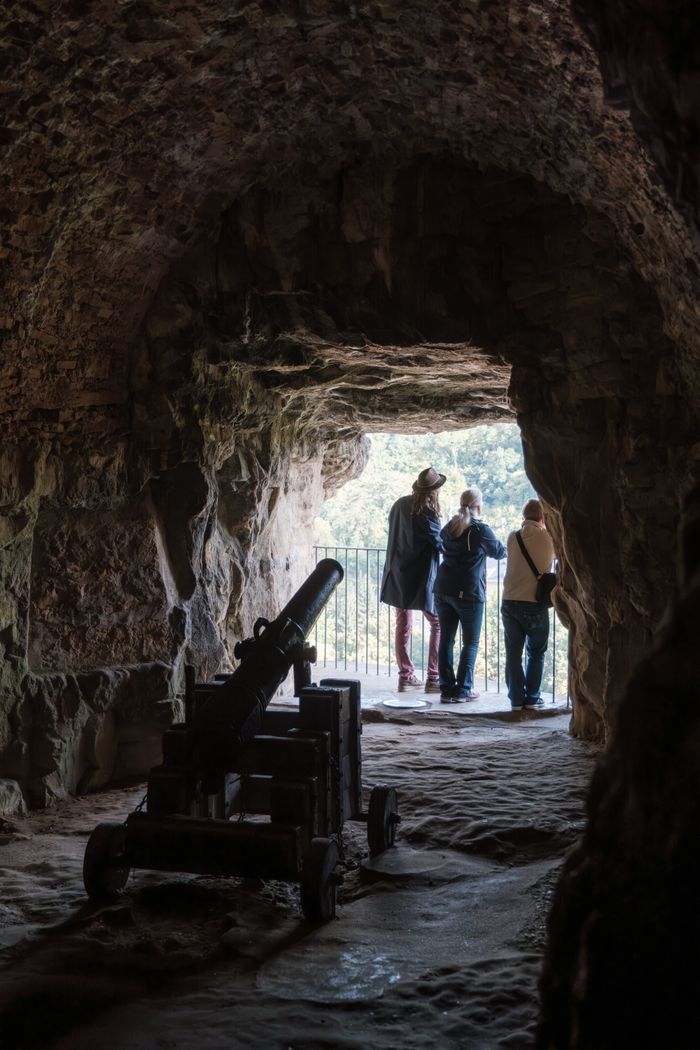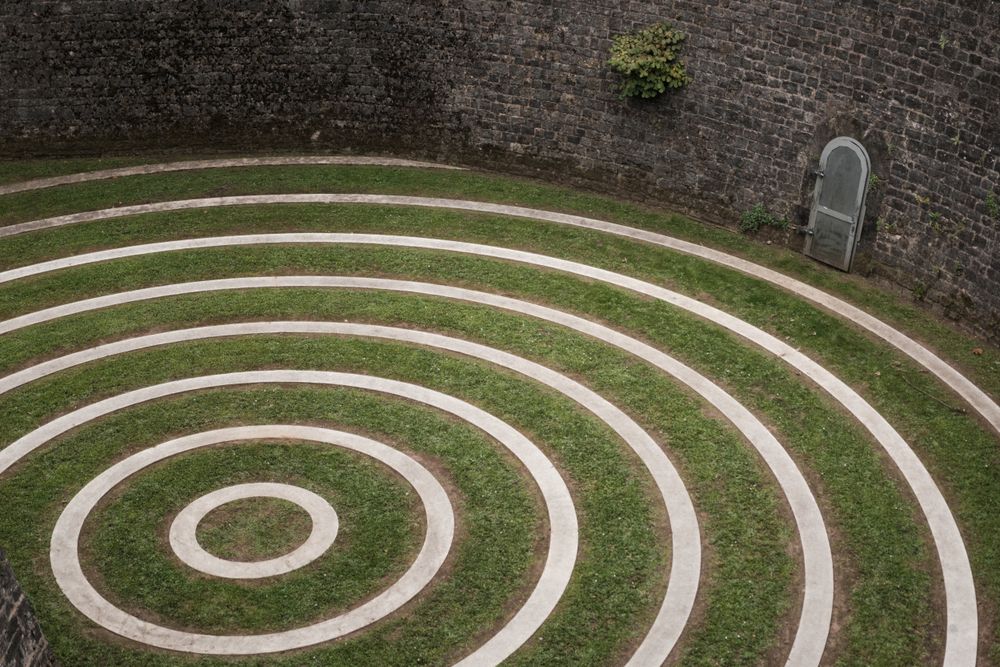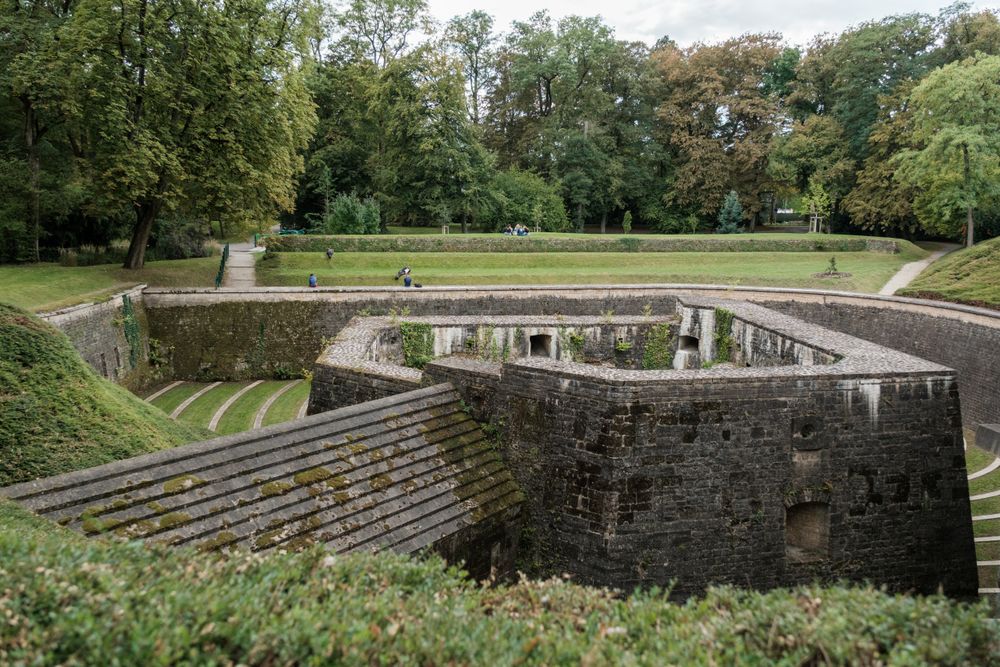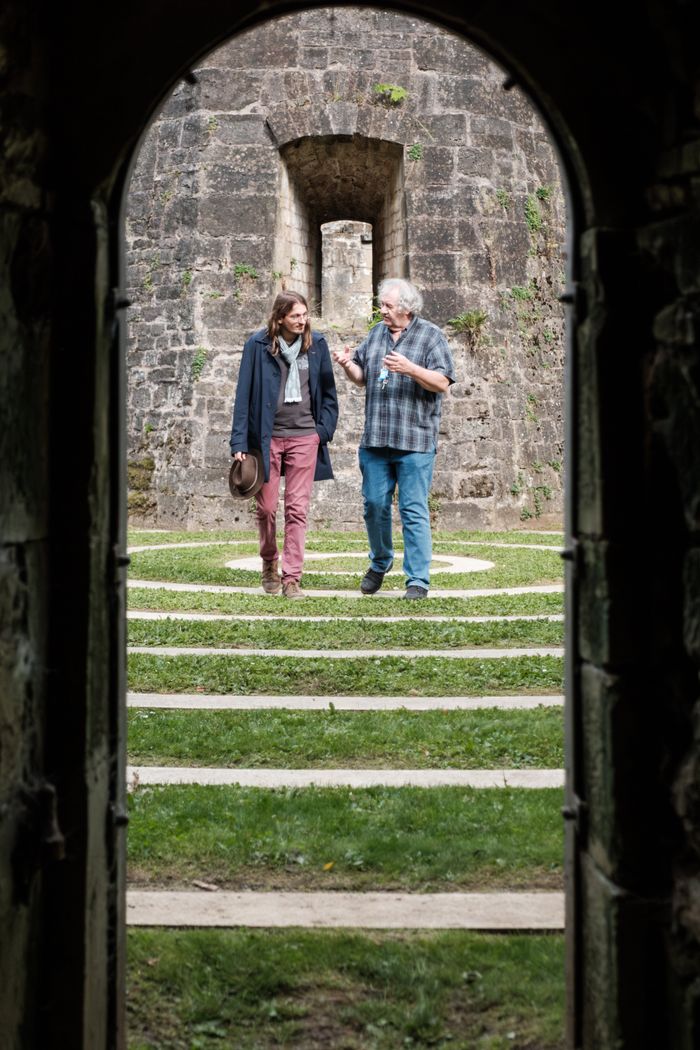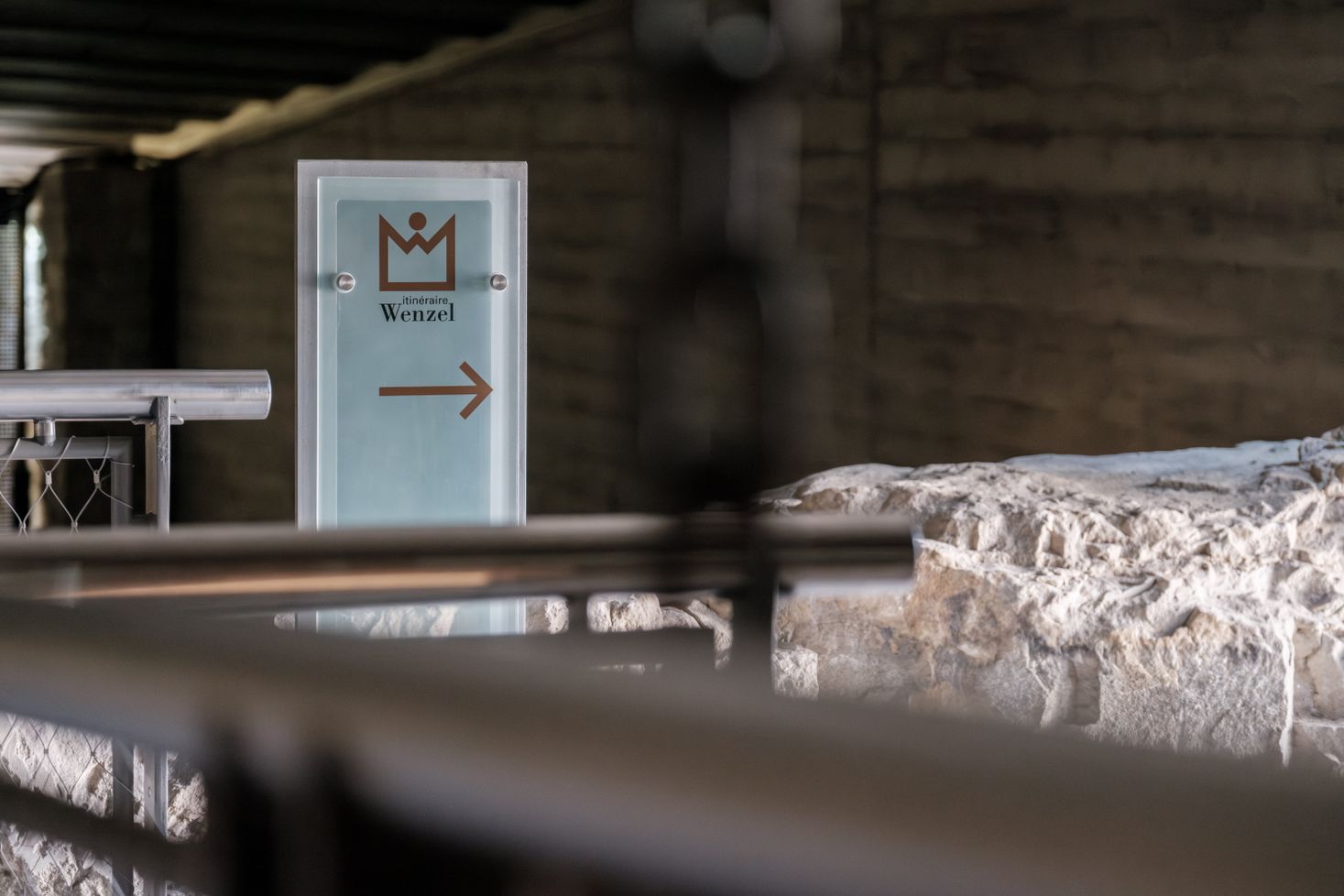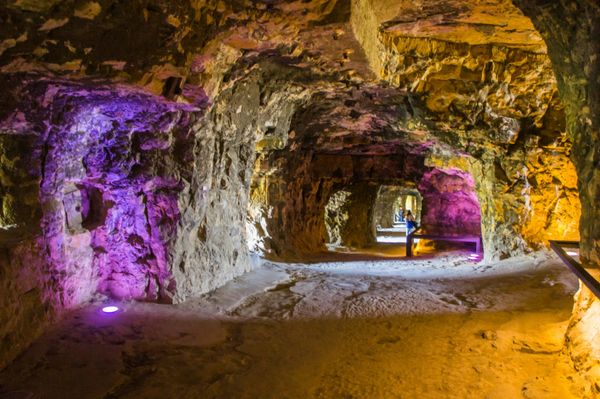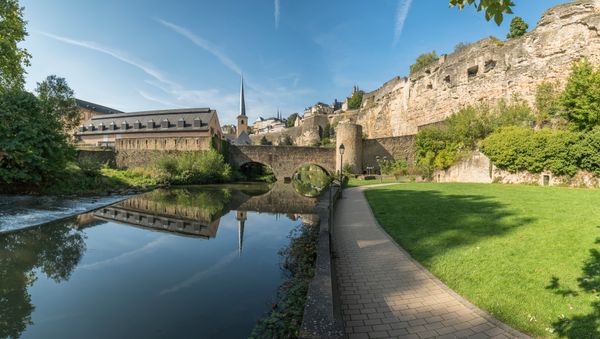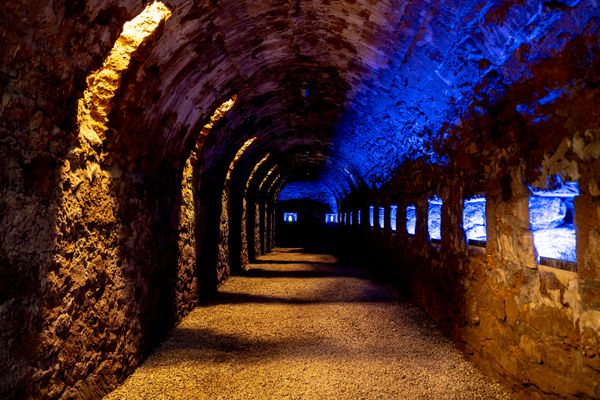Hidden tunnels and talking stones
The casemates are a fascinating series of tunnels running for several kilometres beneath the old town district of Luxembourg City, even extending as far as the Kirchberg plateau. Visitors can explore these tunnels at their own pace, as the Bock Casemates are open to tourists with relatively few restrictions. However, more mysterious are the Pétrusse Casemates and other hidden tunnels of the capital, which can only be visited with a city guide or, for the latter, with the Friends of The Fortress History guided tour.
“She was waiting for him. She knew he’d be back. She loved listening to his voice: so excited, so exciting, so wild and wilful and reliably unreliable.”
The person who waits is Melusina, a mermaid and the tragic heroine of the story surrounding the origins of Luxembourg City. Today visitors can see her statue seated beside the Alzette, waiting for Count Siegfried, or perhaps for our city tour guide.
According to the legend, unbeknown to Count Siegfried, Melusina transformed from mermaid to woman in order to marry him. They lived together and Melusina asked to be left alone one day a week. Every Saturday she locked herself in her private chamber, and Siegfried was not allowed to see her. The legend explains that this is the day when she transformed back into a mermaid. One day the Count peeked through the keyhole, saw Melusina’s fish tail and uttered a scream. Some versions of the legend suggest that she jumped from a rocky ledge into the Alzette river, never to be seen again. Other endings describe Melusina being swallowed by a rock.
Guide Jean knows the Bock and the Pétrusse casemates like the back of his hand. He doesn’t wear his hat for fashion reasons. If the ceiling knocks off his hat, like here in the golden rain tunnel under the Golden Lady, it reminds the young man to keep his head down.
